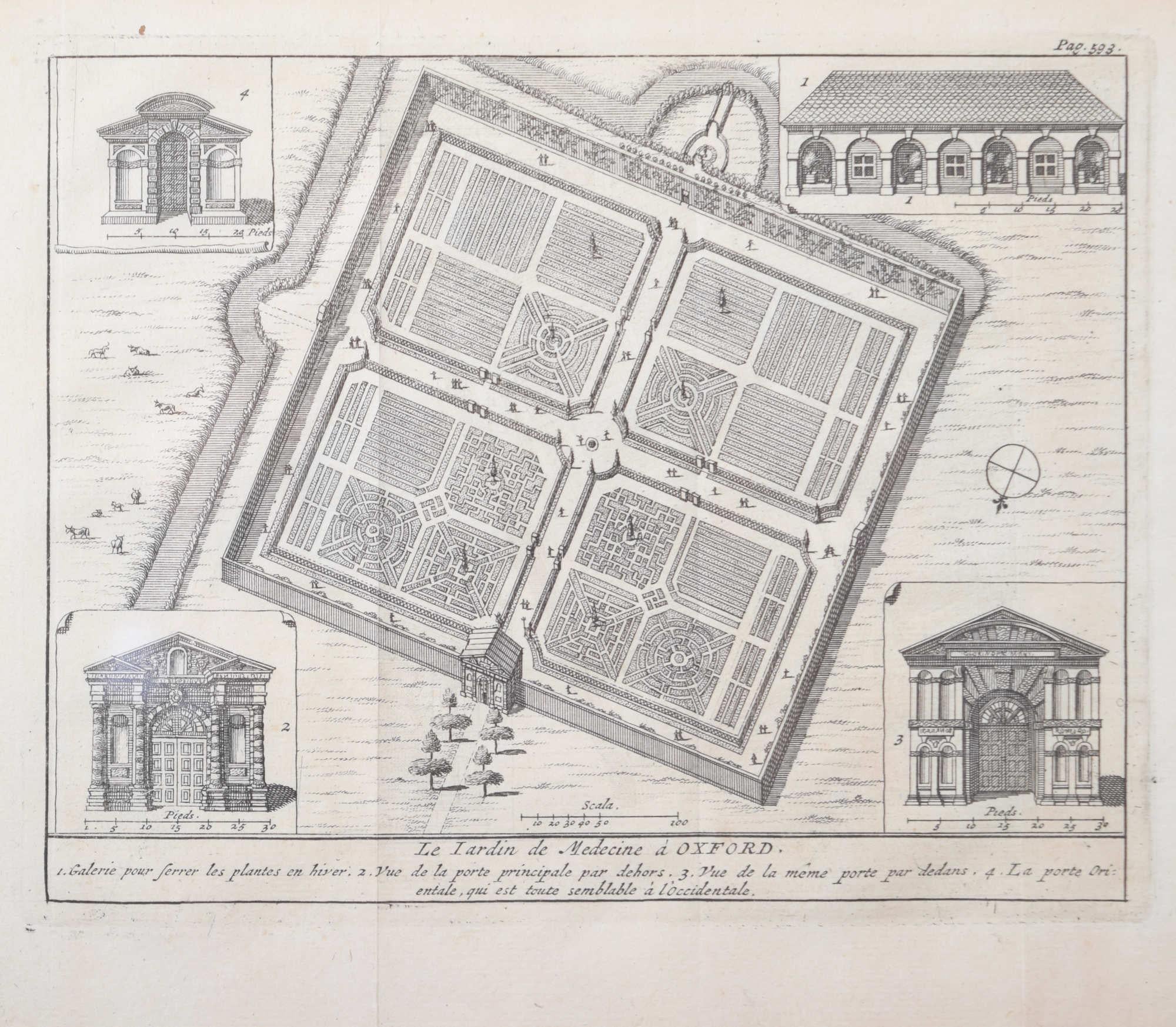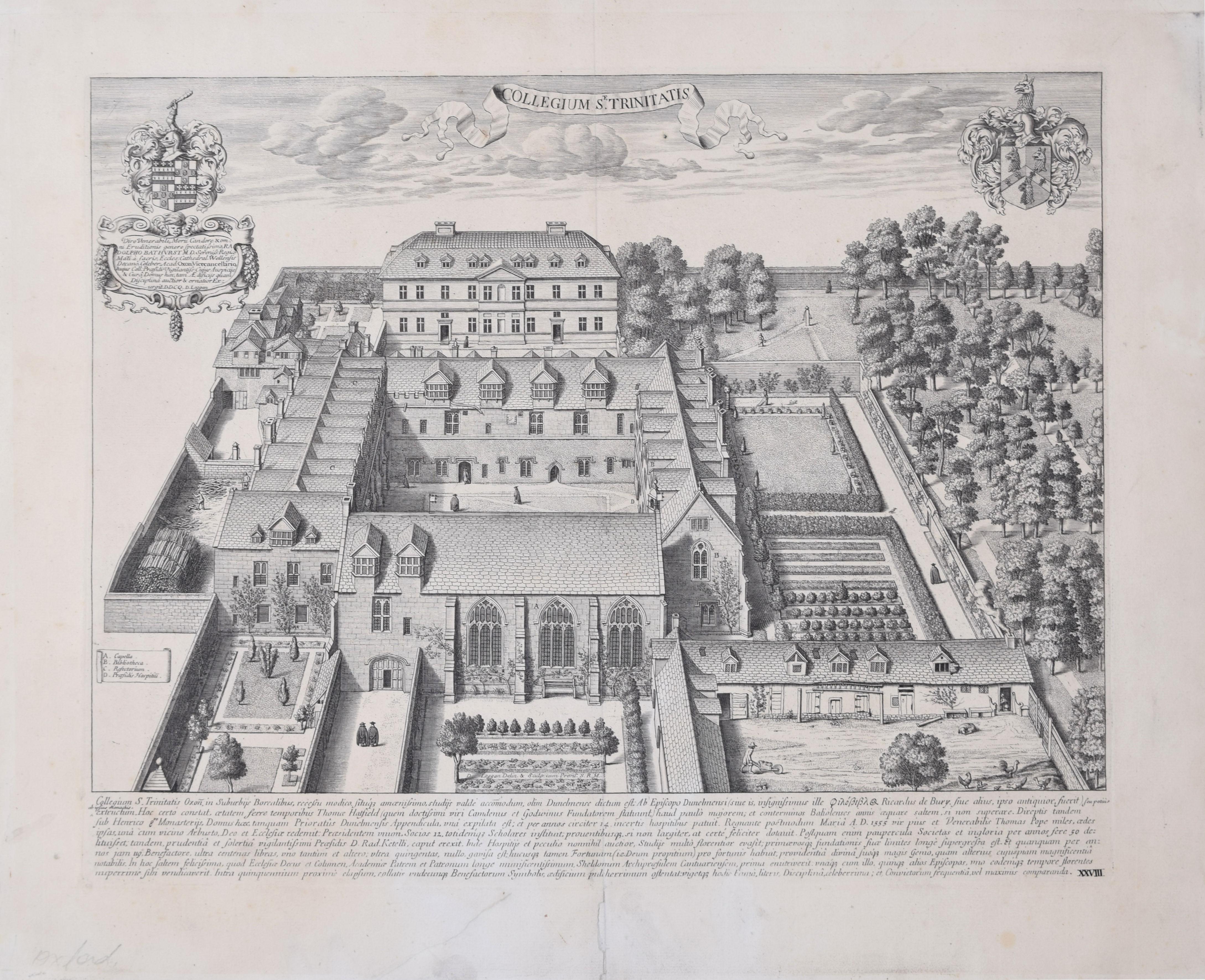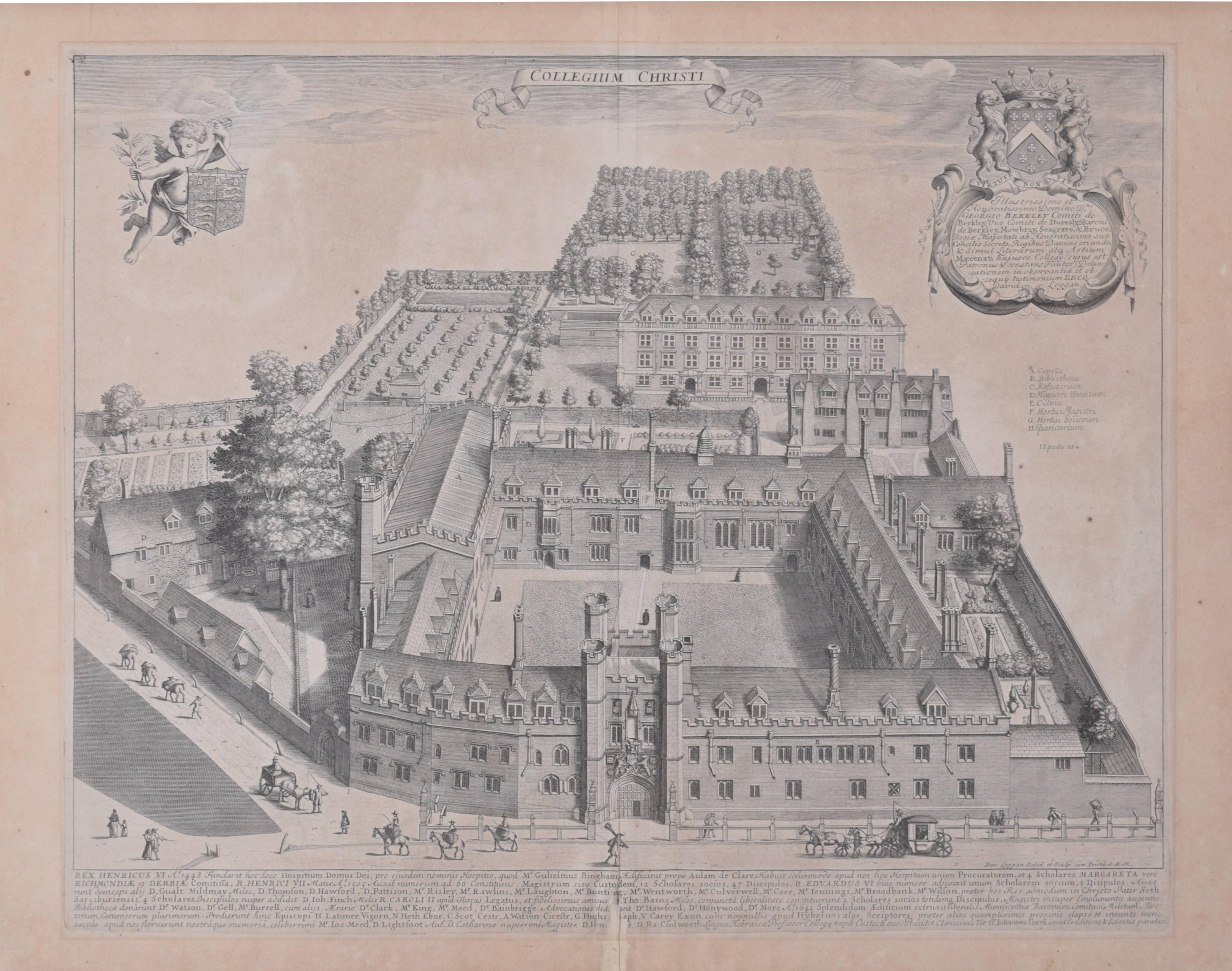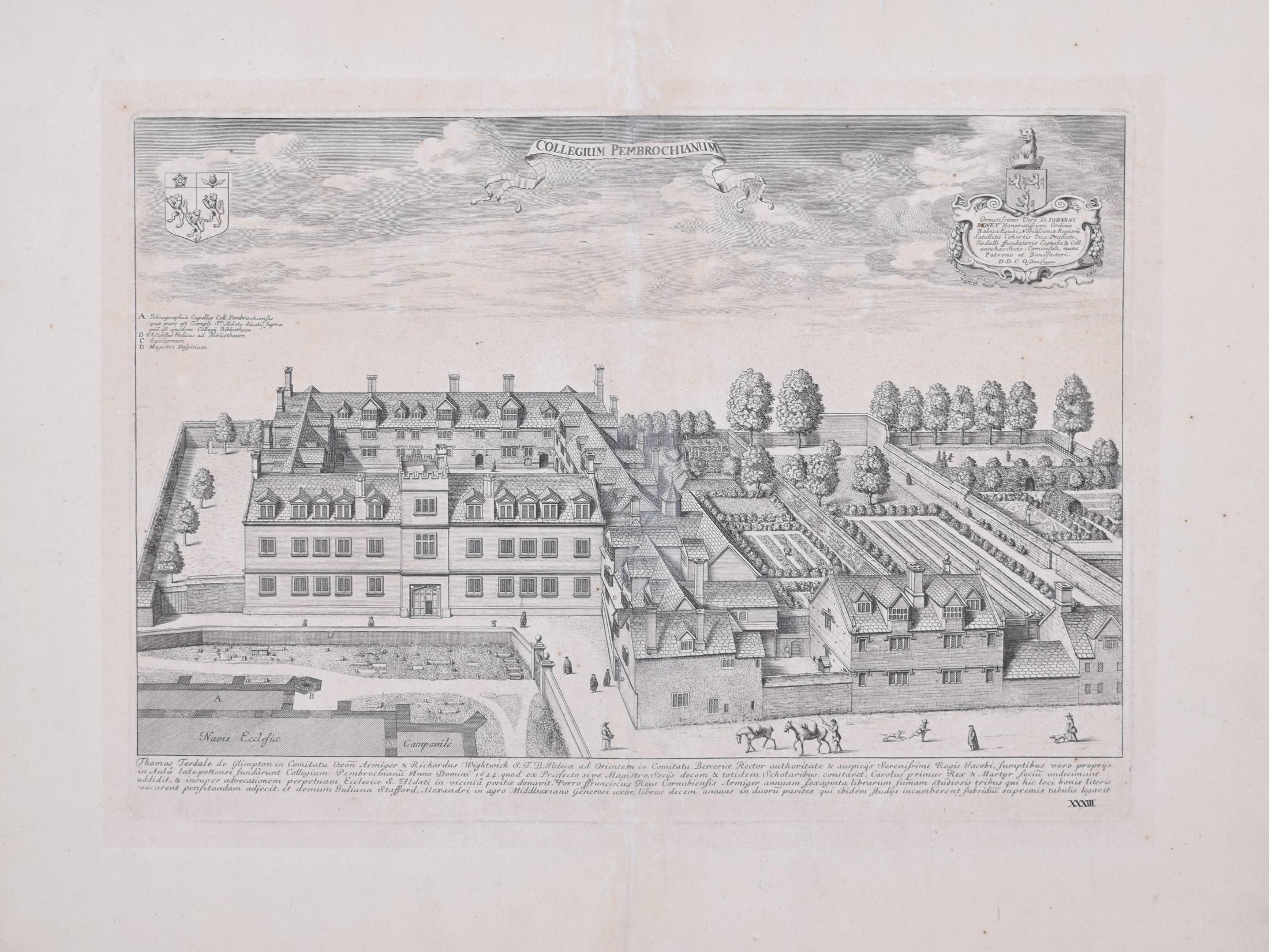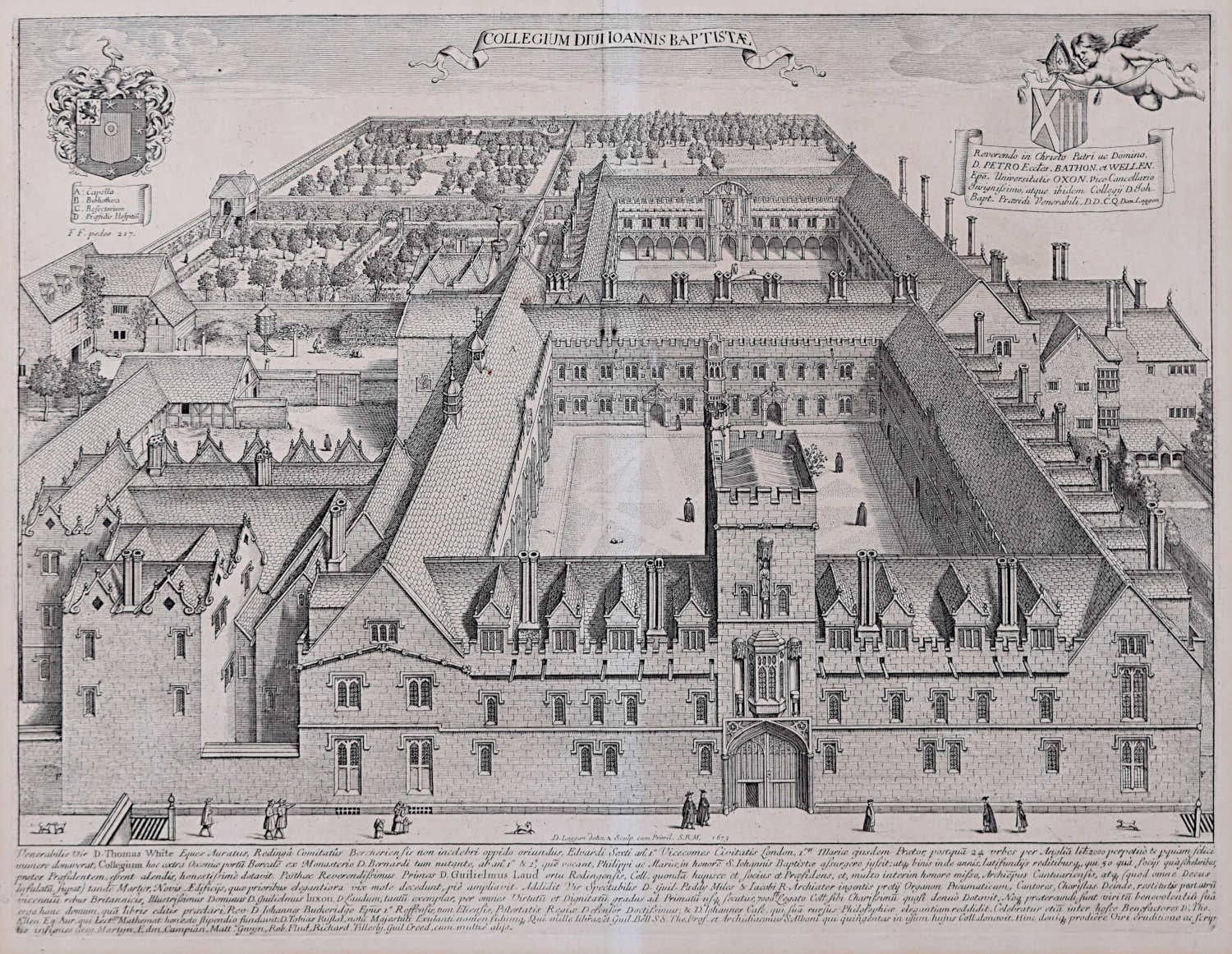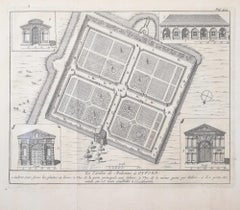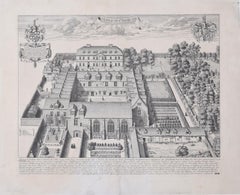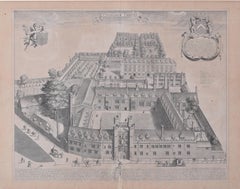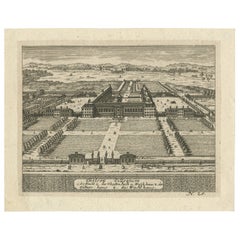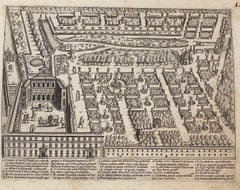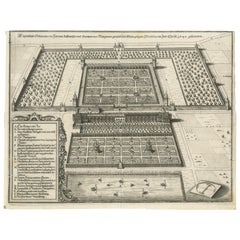David LogganBotanic Garden, University of Oxford David Loggan 1675 engraving1675
1675
About the Item
- Creator:David Loggan (1634 - 1692, British)
- Creation Year:1675
- Dimensions:Height: 15.75 in (40 cm)Width: 19.69 in (50 cm)
- Medium:
- Movement & Style:
- Period:1670-1679
- Condition:Slight toning to central margin, odd marginal losses.
- Gallery Location:London, GB
- Reference Number:1stDibs: LU795311835232
David Loggan
David Loggan’s parents were English and Scottish. He studied engraving in Danzig with Willem Hondius and moved to London in the late 1650s, producing the engraved title page for the folio Book of Common Prayer (1662). After marrying in 1663, Loggan moved to Nuffield, Oxfordshire, in 1665 to avoid the Plague and was in 1668–69 appointed as a public sculptor to the nearby University of Oxford, having been commissioned to produce bird’s-eye views of all the Oxford Colleges. He lived in Holywell Street as he did this. Oxonia illustrata was published in 1675, with the help of Robert White. Following its completion, Loggan commenced work on his equivalent work for Cambridge, Cantabrigia Illustrata, which was finally published in 1690 when he was made engraver at Cambridge University.
- ShippingRetrieving quote...Shipping from: London, United Kingdom
- Return Policy
More From This Seller
View All1670s Realist Prints and Multiples
Engraving
Early 18th Century Realist Prints and Multiples
Engraving
1670s Realist Landscape Prints
Engraving
1670s Realist Landscape Prints
Engraving
1670s Realist Landscape Prints
Engraving
1670s Realist Landscape Prints
Engraving
You May Also Like
Antique Early 18th Century German Prints
Paper
17th Century Modern Landscape Prints
Etching
Mid-18th Century Rococo Landscape Prints
Engraving
Antique 1640s German Maps
Paper
18th Century English School Landscape Prints
Engraving
1740s Modern Figurative Prints
Etching
